#henry bernard chalon
Explore tagged Tumblr posts
Text

The Blacksmith Shop
Artist: Henry Bernard Chalon (British, 1771–1849)
Date: Between 1810-1820
Medium: Oil on Canvas
Collection: Yale Center for British Art, New Haven, CT, United States
#painting#oil on canvas#animal art#henry bernard chalon#british painter#19th century art#yale center for british art#blacksmith#anvil (tool)#broom#bucket#dogs#genre subject#goat#horses#horseshoes#shelves#shop#shovel#skeleton#tools#window
33 notes
·
View notes
Text
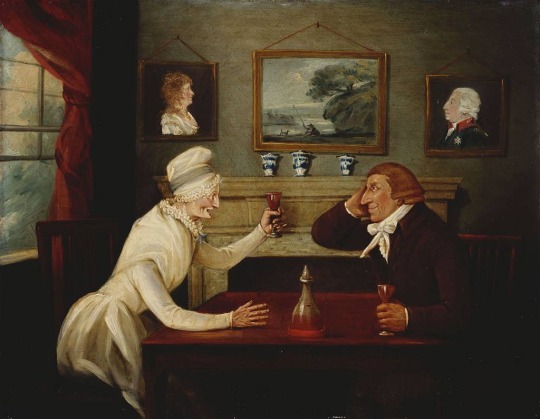
Oil painting, 1800, British.
By Henry Bernard Chalon.
Portraying Jane and William Barker.
Royal Collection Trust.
#Jane barker#William barker#1800#1800s#1800s britain#British#1800s menswear#1800s dress#1800s painting#royal collection trust#Henry Bernard chalon
13 notes
·
View notes
Text

Henry Bernard Chalon, Nettle (1812)
#art#artwork#painting#oil painting#animal painting#animals in art#dog painting#dogs in art#dog#dogs#fine art#art history
11 notes
·
View notes
Note


Call Me Tonight (1986)
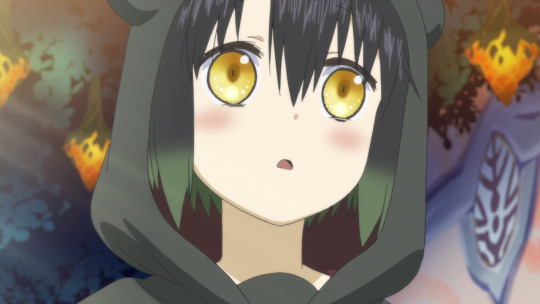
Episode 03 — Somali to Mori no Kamisama
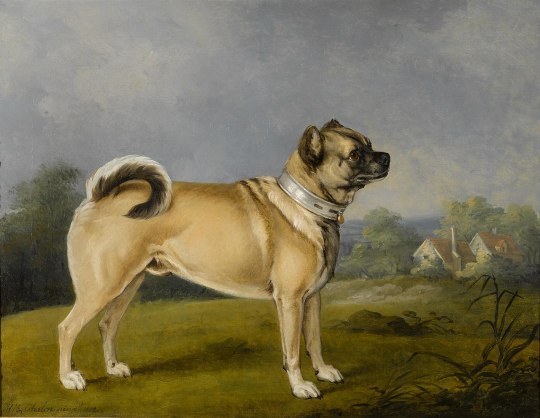
A Favorite Pug (1802) — Henry Bernard Chalon
#answer#mind you i also did find the full photo of the pug#but i'm pretty sure that was an outlier#photos of animals on the internet are cursed with the most fragile links of authorship#and i wish not to set an insurmountable precedent
131 notes
·
View notes
Text
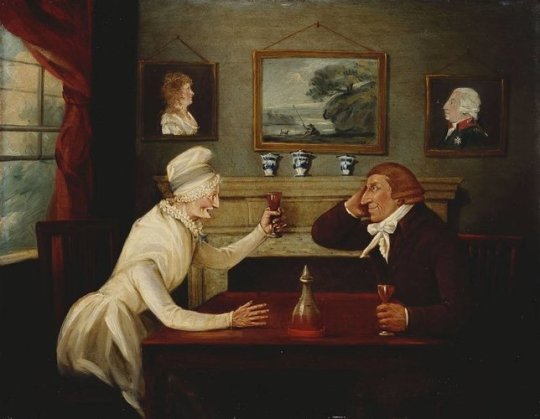
Mrs. Jane Baker with Her Husband William by Henry Bernard Chalon, 1800.
26 notes
·
View notes
Text
ปั๊ก (Pug)

ปั๊กเป็นสุนัขสายพันธุ์ที่มีพื้นเพมาจากประเทศจีน โดยมีลักษณะทางกายภาพที่โดดเด่นคือ ใบหน้าเหี่ยวย่น ปากสั้น และหางม้วนงอ สายพันธุ์นี้มีขนละเอียดและเป็นมันเงา มีหลายสี ส่วนใหญ่มักเป็นสีน้ำตาลแกมเหลือง (สีน้ำตาลอ่อน) หรือสีดำและมีลำตัวกะทัดรัดเป็นสี่เหลี่ยมจัตุรัส มีกล้ามเนื้อที่พัฒนามาอย่างดีและหนาทั่วตัว
ปั๊กถูกนำจากประเทศจีนไปยังยุโรปในศตวรรษที่ 16 และได้รับความนิยมในยุโรปตะวันตกโดยHouse of Orangeแห่งเนเธอร์แลนด์ และHouse of Stuart ในสหราชอาณาจักร ในศตวรรษที่ 19 สมเด็จพระราชินีวิกตอเรียทรงมีความหลงใหลในสุนัขพันธุ์ปั๊ก และทรงส่งต่อไปยังสมาชิกคนอื่นๆ ในราชวงศ์
ปั๊กเป็นที่รู้จัก ว่าเป็นสุนัขที่เป็นมิตรและเข้ากับคน ง่าย อเมริกันเคนเนล คลับบรรยายถึงบุคลิกของสุนัขพันธุ์นี้ว่า "ใจเย็นและมีเสน่ห์" ปั๊กยังคงได้รับความนิยมในศตวรรษที่ 21 โดยมีเจ้าของผู้มีชื่อเสียงบางคน ปั๊กมีความเสี่ยงต่อสุขภาพหลายประการเนื่องจากลักษณะนิสัยของพวกมัน

ลักษณะ
แม้ว่าปั๊กที่ปรากฏในภาพพิมพ์สมัยศตวรรษที่ 18 มักจะมีรูปร่างยาวและเพรียวสายพันธุ์สมัยใหม่ชอบที่มีรูปร่างเป็นทรงสี่เหลี่ยมจัตุรัสรูปร่างกะทัดรัด หน้าอกลึก และมีกล้ามเนื้อที่ได้รับการพัฒนามาอย่างดีขนเรียบและเป็นมันอาจเป็นสีน้ำตาลแกมเหลือง, สีน้ำตาลอมเหลือง, สีเทาแกมเหลือง หรือสีดำ มีเครื่องหมายชัดเจนและมีเส้นสีดำทอดยาวจากท้ายทอยถึงหาง โดยปกติหางจะขดแน่นเหนือสะโพก
ปั๊กมีหูสองรูปทรงที่แตกต่างกัน ได้แก่ "ดอกกุหลาบ" และ "กระดุม" หูแบบ "Rose" มีขนาดเล็กกว่าหูแบบ "ติดกระดุม" แบบมาตรฐาน และพับโดยให้ขอบด้านหน้าชิดกับด้านข้างของศีรษะ การตั้งค่าการผสมพันธุ์ไปที่หูสไตล์ "ปุ่ม"
ขาของสุนัขพันธุ์ปั๊กมีความแข็งแรง ตรง และมีความยาวปานกลางและอยู่ใต้ตัวได้ดี ไหล่ของพวกเขาวางไปด้านหลังพอสมควร ข้อเท้าแข็งแรง เท้าเล็ก นิ้วเท้าแยกออกได้ดี และเล็บสีดำ ฟันล่างมักจะยื่นออกมามา��กว่าฟันบน ส่งผลให้เกิดการสบฟันข้างใต้

ประวัติ
ปั๊กถูกนำจากประเทศจีนไปยังยุโรปในศตวรรษที่ 16 สุนัขที่คล้ายกันนี้ได้รับความนิยมในราชสำนักในสมัยราชวงศ์ซ่ง
ในสมัยโบราณ ปั๊กได้รับการผสมพันธุ์เพื่อเป็นเพื่อนของครอบครัวผู้ปกครองในประเทศจีน สัตว์เลี้ยงปั๊กเหล่านี้ได้รับการยกย่องอย่างสูงจากจักรพรรดิ์จีน และสุนัขของราชวงศ์ก็ถูกเลี้ยงไว้อย่างหรูหราและได้รับการดูแลโดยทหาร ต่อมาสุนัขพันธุ์ปั๊กได้แพร่กระจายไปยังส่วนอื่นๆ ของเอเชีย ในทิเบตพระภิกษุเลี้ยงปั๊กเป็นสัตว์เลี้ยงในอาราม สายพันธุ์นี้ยังคงรักษาความจงรักภักดีต่อเจ้าของด้วยความรักใคร่มาตั้งแต่สมัยโบราณ
คริสต์ศตวรรษที่ 16 และ 17
ปั๊กเป็นที่นิยมในราชสำนักยุโรป และมีรายงานว่ากลายเป็นสุนัขอย่างเป็นทางการของHouse of Orangeในปี 1572 หลังจากที่ปั๊กชื่อปอมเปย์ช่วยชีวิตเจ้าชายแห่งออเรนจ์ด้วยการแจ้งเตือนให้เขาทราบถึงการที่มือสังหารเข้ามาใกล้
ปั๊กตัวหนึ่งเดินทางไปพร้อมกับพระเจ้าวิลเลียมที่ 3และแมรีที่ 2เมื่อพวกเขาออกจากเนเธอร์แลนด์เพื่อรับราชบัลลังก์แห่งอังกฤษในปี ค.ศ. 1688 ในช่วงเวลานี้ ปั๊กอาจได้รับการผสมพันธุ์กับคิงชาร์ลสแปเนียลแบบเก่า ทำให้เป็นคิงชาร์ลส์สแปเนียล สมัยใหม่ ลักษณะเหมือนปั๊ก
ในที่สุดสายพันธุ์นี้ก็ได้รับความนิยมในประเทศอื่นๆ ในยุโรปเช่นกัน ปั๊กถูกวาดโดยGoyaในสเปน และในอิตาลีพวกมันก็ขี่ม้าขึ้นหน้าด้วยรถม้าส่วนตัว โดยแต่งกายด้วยแจ็กเก็ตและกางเกงในที่เข้ากันกับคนขับรถม้า พวกมันถูกใช้โดยทหาร เพื่อติดตาม สัตว์และผู้คน และยังถูกใช้เป็นสุนัขเฝ้ายาม อีกด้วย

คริสต์ศตวรรษที่ 18 ถึงคริสต์ศตวรรษที่ 20
ปั๊กเป็นภาพในปี 1802 โดยHenry Bernard Chalon
จิตรกรชาวอังกฤษWilliam Hogarthเป็นเจ้าของสุนัขปั๊กหลายตัวโดยเฉพาะ ภาพเหมือนตนเองของเขาในปี 1745ซึ่งขณะนี้อยู่ในTate Gallery ในลอนดอน รวมถึงสุนัขพันธุ์ปั๊กของเขาTrumpด้วย ปั๊กยังเป็นที่รู้จักกันดีในอิตาลี ในปี ค.ศ. 1789 ผู้เขียนHester Piozziเขียนในบันทึกของเธอว่า "สุนัขพันธุ์ปั๊กตัวน้อยหรือสุนัขพันธุ์ดัทช์มาสทิฟออกจากลอนดอนเพื่อไปปาดัวฉันรับรู้ รถม้าทุกคันที่ฉันพบที่นี่มีปั๊กอยู่ในนั้น"
ความนิยมของปั๊กยังคงแพร่กระจายในฝรั่งเศสในช่วงศตวรรษที่ 18 ก่อนที่เธอจะแต่งงานกับนโปเลียน โบนาปาร์ต โจเซฟีน ได้ให้สุนัขพันธุ์ปั๊กของเธอ ฟอร์จูน นำข้อความปกปิดไปให้ครอบครัวของเธอขณะที่เธอถูกคุมขังในเรือนจำเล การ์ม ส์โดยได้รับสิทธิ์เยี่ยมเยียนโดยลำพัง
ในอังกฤษช่วงศตวรรษที่ 19 สุนัขพันธุ์นี้เจริญรุ่งเรืองภายใต้การอุปถัมภ์ของ สมเด็จ พระราชินีวิกตอเรีย ปั๊กหลายตัวของเธอที่เธอเลี้ยงเอง ได้แก่ Olga, Pedro, Minka, Fatima และ Venus การมีส่วนร่วม ของเธอกับสุนัขโดยทั่วไปช่วยสร้างKennel Clubซึ่งก่อตั้งขึ้นในปี พ.ศ. 2416 สมเด็จพระราชินีวิกตอเรียทรงนิยมสีแอปริคอทและกวาง ความหลงใหลในสุนัขของเธอถูกส่งต่อไปยังสมาชิกราชวงศ์คนอื่นๆ อีกหลายคน รวมถึงหลานชายของเธอพระเจ้าจอร์จที่ 5 และพระราชโอรสของเขาพระเจ้าเอ็ดเวิร์ดที่ 8 หลายคนตอบสนองต่อภาพลักษณ์ของการต่อต้านฟังก์ชันนิยมและขนาดจิ๋วของสายพันธุ์ในช่วงเวลานี้
ในภาพวาดและงานแกะสลักของศตวรรษที่ 18 และ 19 ปั๊กมักจะปรากฏโดยมีขาและจมูกที่ยาวกว่าในปัจจุบัน และบางครั้งก็มีหูที่ถูกครอบตัด รูปลักษณ์ของปั๊กสมัยใหม่อาจเปลี่ยนไปหลังปี 1860 เมื่อมีการนำเข้าปั๊กคลื่นลูกใหม่โดยตรงจากจีน ปั๊กเหล่านี้มีขาที่สั้นกว่า��ละมีจมูกปั๊กสไตล์ทันสมัย เลดี้ บราสซีย์ ขุนนางชา��อังกฤษให้เครดิตในการทำปั๊กดำให้เป็นแฟชั่นหลังจากที่เธอนำสุนัขพันธุ์ปั๊กกลับมาจากประเทศจีนในปี พ.ศ. 2429 การตัดหูเป็นสิ่งผิดกฎหมายในปี พ.ศ. 2438
ปั๊กส์มาถึงสหรัฐอเมริกาในช่วงศตวรรษที่ 19 และไม่นานก็เดินทางมาถึงบ้านของครอบครัวและเวทีการแสดง American Kennel Clubยอมรับสายพันธุ์นี้ในปี พ.ศ. 2428 Pug Dog Club of America ก่อตั้งขึ้นในปี พ.ศ. 2474 และได้รับการยอมรับจาก American Kennel Club ในปีเดียวกันนั้น ในปี 1981 ปั๊กพันธุ์Dhandys Favorite Woodchuckได้รับรางวัลWestminster Kennel Club Dog Showในสหรัฐอเมริกา ซึ่งเป็นปั๊กเพียงตัวเดียวที่ได้รับรางวัลที่นั่นนับตั้งแต่การแสดงเริ่มขึ้นในปี พ.ศ. 2420

ศตวรรษที่ 21
เปรียบเทียบหัวปั๊กปี 2003 (ซ้าย) และปี 1927 (ขวา)มุมมองด้านข้างของจมูกที่ยาวขึ้นของปั๊กย้อนยุค ดวงตาโปนน้อยลง และริ้วรอยน้อยลงแชมป์โลกหรือรางวัลชนะเลิศในงานแสดงสุนัขโลก ปี 2004 ที่เมืองรีโอเดจาเนโรเป็นสุนัขพันธุ์ปั๊กที่มีชื่อว่าDouble D Cinoblu's Masterpiece เรโทร ปั๊กส์
แนวโน้มการผสมพันธุ์ของปั๊กส่งผลให้ปากกระบอกปืนสั้นลงและขาสั้นลงเมื่อเวลาผ่านไป โดยสุนัขเหล่านี้เสี่ยงต่อปัญหาด้านสุขภาพ แนวโน้มนี้ทำให้เกิดข้อถกเถียงเกี่ยวกับการเพาะพันธุ์ปั๊ก และปฏิกิริยาของฝ่ายนิติบัญญัติ ตัวอย่างเช่น เนเธอร์แลนด์วางข้อจำกัดในการผส��พันธุ์สุนัขพันธุ์หน้าสั้น รวมถึงสุนัขพันธุ์ปั๊กทั่วไปด้วย อย่างไรก็ตาม ตั้งแต่ราวปี พ.ศ. 2549 ในบางประเทศมีการต่อต้านกระแสนิยมในการผสมพันธุ์ "สุนัขพันธุ์ปั๊กย้อนยุค" พ่อพันธุ์แม่พันธุ์ที่ติดตามการเปลี่ยนแปลงของสายพันธุ์นี้มุ่งเป้าไปที่จมูกที่ยาวขึ้น ดวงตาที่ยื่นออกมาน้อยลง ขาตรง และริ้วรอยบนใบหน้าน้อยลง
สนับสนุนโดย urobet24
Urobet24 เราคือแพลตฟอร์มเกมส์คาสิโนที่ดีที่สุด เราได้รวมรวมเกมส์ดังจากผู้ให้บริการพนันออนไลน์ที่ดีที่สุดมาไว้ให้ท่าน ไม่ว่าจะเป็น สล็อตออนไลน์ พนันกีฬาออนไลน์ แทงบอลออนไลน์ คาสิโนสด โป๊กเกอร์ ยิงปลา และเกมส์คาสิโนอื่น ๆ อีกมากมาย ที่ Urobet24 เว็บเดียวจบครบทุกรูปแบบเดิมพัน Update เกมส์ใหม่ ๆ ตลอดเวลา ท่านจะได้สัมผัสรูปแบบเกมส์คาสิโนออนไลน์ สล็อตออนไลน์ ที่มีทั้งภาพและเสียงจริงเหมือนนั่งเล่นที่ตู้สล็อตจริงๆ เดิมพันคาสิโนถ่ายทอดสดส่งตรงจากห้องส่งคาสิโน ท่านไม่ต้องเสียเวลาเดินทางไปเล่นที่คาสิโนให้เหนื่อยอีกต่อไป และท่านจะได้พบกับแจ็คพ็อตใหญ่ ๆ มากมายมีมาให้ท่านได้ลุ้นอยู่ตลอดเวลา สัมผัสรูปแบบเกมส์ที่ครบ สนุก ตื่นเต้นเร้าใจ กับเราได้แล้ววันนี้ที่ urobet24.com
0 notes
Text
While the turnspit dog breed faded out of existence in the 19th century, the pug would resurge in popularity just twenty years after this was published, when explorer Anne Brassey brought some back from China. These pugs had the shorter legs and muzzles we think of in pugs today.

Henry Bernard Chalon, 1802

Charles Burton Barber, 1882
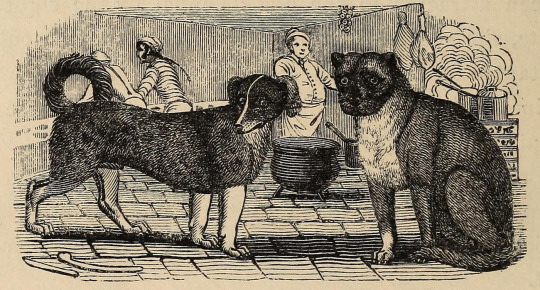
The Turnspit "Canis vertagus" and the Pug "Le Doguin"
There are two breeds of the turnspit, the one having the forelegs straight, and the other with them crooked. Both are long-backed, short-legged, strange looking animals, and are now rarely kept except as curiosities. Formerly, however, the turnspit had the honour of turning the roast-beef of Old England j but since machinery has been substituted for his fore-paws, Othello’s occupation’s gone. He’s no longer.
"---- a dog that turns the spit,
Bestirs himself, and plies his feet
To climb the wheel; but all in vain,
His own weight brings him back again,
And still he's in the self-same place
Where, at his setting out, he was." (Hudibras)
The right-hand figure in the above engraving represents the pug, a common pet dog a few years ago, but now seldom seen.
Image and text from A Natural History of British and Foreign Quadrupeds. Written by James H. Fennell. 1843.
Internet Archive
156 notes
·
View notes
Photo

A favorite pug (1802) Henry Bernard Chalon
Source
18 notes
·
View notes
Photo

Study of a Dog, Henry Bernard Chalon, 1820–1849, Smithsonian: Cooper Hewitt, Smithsonian Design Museum
Medium: Black crayon on paper
http://collection.cooperhewitt.org/view/objects/asitem/id/48769
3 notes
·
View notes
Photo




I’ve only just found out that pugs originally had larger snouts and now I have to share some 18th and 19th century paintings of pugs
Top left to right:
‘The painter and his pug’ by William Hogarth (1745)
Portrait of Princess Ekaterina Dmitrievna Golitsyna, by Louis Michel Vanloo (1759)
Bottom left to right:
‘A pug’ by Thomas Gainsborough (1780)
'A pug dog’ by Henry Bernard Chalon (1802)
#I don't know how to tag this#pugs#dog history#???????#I'm just trying to live my life here why is tagging for this post taking me 10 minutes
1K notes
·
View notes
Photo

Henry Bernard Chalon (1770 – 1849) was an English painter and lithographer.
var quads_screen_width = document.body.clientWidth; if ( quads_screen_width >= 1140 ) { /* desktop monitors */ document.write('<ins class="adsbygoogle" style="display:inline-block;width:300px;height:250px;" data-ad-client="pub-9117077712236756" data-ad-slot="1897774225" >'); (adsbygoogle = window.adsbygoogle || []).push({}); }if ( quads_screen_width >= 1024 && quads_screen_width < 1140 ) { /* tablet landscape */ document.write('<ins class="adsbygoogle" style="display:inline-block;width:300px;height:250px;" data-ad-client="pub-9117077712236756" data-ad-slot="1897774225" >'); (adsbygoogle = window.adsbygoogle || []).push({}); }if ( quads_screen_width >= 768 && quads_screen_width < 1024 ) { /* tablet portrait */ document.write('<ins class="adsbygoogle" style="display:inline-block;width:300px;height:250px;" data-ad-client="pub-9117077712236756" data-ad-slot="1897774225" >'); (adsbygoogle = window.adsbygoogle || []).push({}); }if ( quads_screen_width < 768 ) { /* phone */ document.write('<ins class="adsbygoogle" style="display:inline-block;width:300px;height:250px;" data-ad-client="pub-9117077712236756" data-ad-slot="1897774225" >'); (adsbygoogle = window.adsbygoogle || []).push({}); }
Son of the Dutch émigré and engraver Jan Chalon (1749–95), Henry studied at the Royal Academy Schools and then started specializing in sporting and animal painting. He was appointed Animal Painter to Frederica, Duchess of York, in 1795, and later to both the Prince Regent and King William IV. Royal patronage also led to work for many other social prominent sporting enthusiasts but, despite exhibiting frequently at the Royal Academy, he never became a member of it. This may be because of a conservative trend in painting at this time, which favoured George Stubbs’s measured style, which Chalon forever tried to imitate. He also drew lithographs for Philipp Andre’s “Specimens of Polyautography” in 1804.
His one child, a daughter, was the miniaturist Maria A Chalon (Mrs Henry Moseley, c. 1800–67).
Henry Bernard Chalon was originally published on HiSoUR Art Collection
0 notes
Text

Henry Bernard Chalon (English, 1770–1849), "The Duchess of York’s Spaniel", 1804
#Henry Bernard Chalon#art#english art#british art#painting#animal painting#animals in art#animals#dog#dogs#dog painting#dogs in art#oil on millboard#oil painting#19th century art#19th century#1800s#paintings#spaniel#art history
40 notes
·
View notes
Text

Henry Bernard Chalon, The Duchess of York's Spaniel (1804)
#art#artwork#painting#oil painting#animal painting#animals in art#dog painting#dogs in art#dog#dogs#fine art#art history#spaniel#spaniel dog
14 notes
·
View notes
Photo


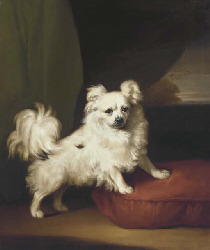
This painting in Hannibal’s kitchen is called White Papillon Standing on a Cushion painted by Henry Bernard Chalon around 1836.
Henry Bernard Chalon (1770–1849) was an English painter and lithographer. He was a son of the Dutch émigré and engraver Jan Chalon and studied at the Royal Academy Schools. Then he started specializing in sporting and animal painting. He was appointed Animal Painter to Frederica, Duchess of York, in 1795, and later to both the Prince Regent and King William IV.
Whether Hannibal has the $36 000 original at home, a copy or whether it’s his shot at the painting (since the colors seem to me a little more vibrant) is probably going to remain a mystery. Nevertheless we can tackle the metaphor behind it:
a dog, something to remind of Will Graham and maybe even start conversation with him over the painting
papillon, the french word for butterfly, can lead us both to the past to France where Hannibal resided as a young man, and to the future reminding us of moth, a symbol of The Silence of the Lambs story
the history of papillon as a dog breed is traced through works of art. The earliest toy spaniels resembling the papillon are found in Italy, the country from which Dr. Lecter’s ancestry comes from as well.
Sending love and puppies to xshiromorix for identifying the painting. :-)
—-
All descriptions of paintings in Hannibal are here.
#hannibal#nbchannibal#White Papillon Standing on a Cushion#Henry Bernard Chalon#hannibal lecter#xshiromorix#paintings in hannibal#hannotations#hannibal's kitchen
332 notes
·
View notes
Photo

Study of Two Herons, Henry Bernard Chalon, 1820–1849, Smithsonian: Cooper Hewitt, Smithsonian Design Museum
Medium: Black crayon on paper
http://collection.cooperhewitt.org/view/objects/asitem/id/48770
1 note
·
View note
Photo

Studies of Ducks and a Fowl with Chickens, Henry Bernard Chalon, 1825–1849, Smithsonian: Cooper Hewitt, Smithsonian Design Museum
Medium: Black crayon on paper
http://collection.cooperhewitt.org/view/objects/asitem/id/48771
11 notes
·
View notes